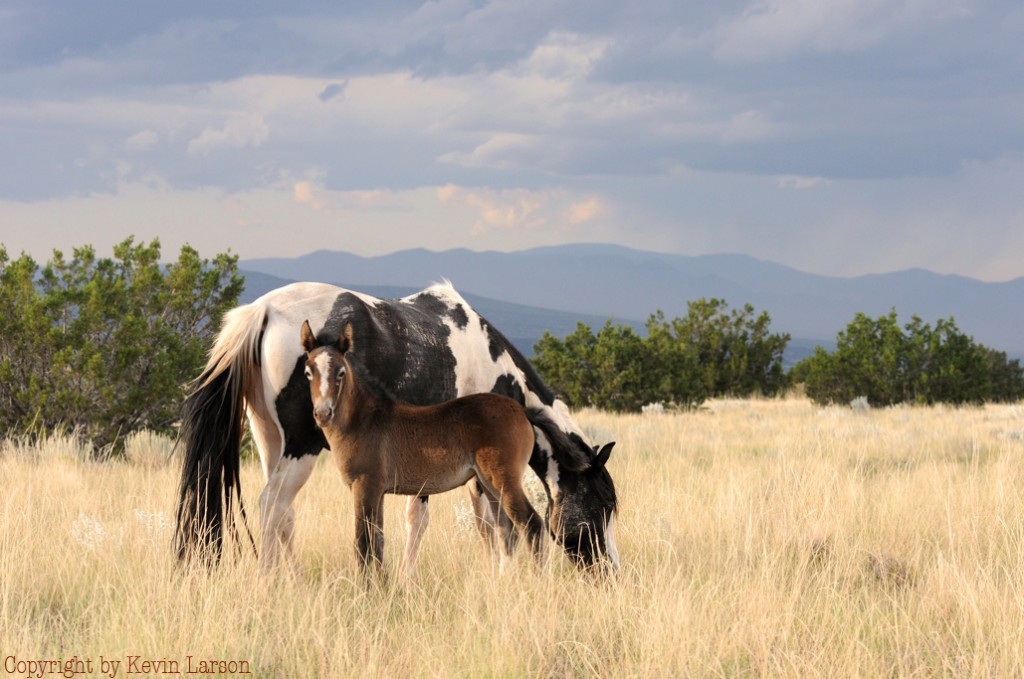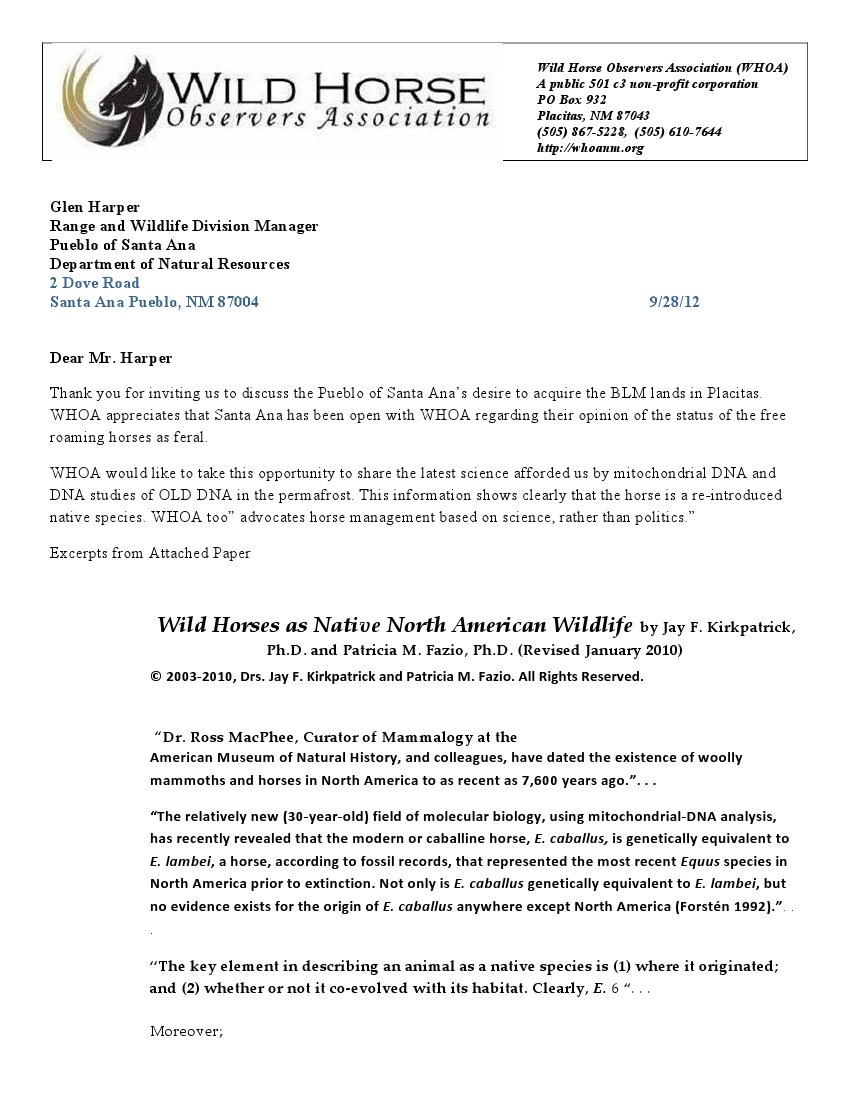by Jay F. Kirkpatrick, Ph.D. and Patricia M. Fazio, Ph.D. (Revised January 2010)
© 2003â€2010, Drs. Jay F. Kirkpatrick and Patricia M. Fazio. All Rights Reserved.
Are wild horses truly “wild,†as an indigenous species in North America, or are they “feral weeds†– barnyard escapees, far removed genetically from their prehistoric ancestors? The question at hand is, therefore, whether or not modern horses, Equus caballus, should be considered native wildlife.
The question is legitimate, and the answer important. In North America, the wild horse is often labeled as a nonâ€native, or even an exotic species, by most federal or state agencies dealing with wildlife management, such as the National Park Service, U.S. Fish and Wildlife Service, and the Bureau of Land Management. The legal mandate for many of these agencies is to protect native wildlife and prevent nonâ€native species from causing harmful effects on the general ecology of the land. Thus, management is often directed at total eradication, or at least minimal numbers. If the idea that wild horses were, indeed, native wildlife, a great many current management approaches might be compromised. Thus, the rationale for examining this proposition, that the horse is a native or nonâ€native species, is significant.
The genus Equus, which includes modern horses, zebras, and asses, is the only surviving genus in a once diverse family of horses that included 27 genera. The precise date of origin for the genus Equus is unknown, but evidence documents the dispersal of Equus from North America to Eurasia approximately 2â€3 million years ago and a possible origin at about 3.4â€3.9 million years ago. Following this original emigration, several extinctions occurred in North America, with additional migrations to Asia (presumably across the Bering Land Bridge), and return migrations back to North America, over time. The last North American extinction probably occurred between 13,000 and 11,000 years ago (Fazio 1995), although more recent extinctions for horses have been suggested. Dr. Ross MacPhee, Curator of Mammalogy at the American Museum of Natural History, and colleagues, have dated the existence of woolly mammoths and horses in North America to as recent as 7,600 years ago. Had it not been for previous westward migration, over the Bering Land Bridge, into northwestern Russia (Siberia) and Asia, the horse would have faced complete extinction. However, Equus survived and spread to all continents of the globe, except Australia and Antarctica. Continue reading →

 PDF: WHOA Newsletter final RPRMP DEIS
PDF: WHOA Newsletter final RPRMP DEIS











